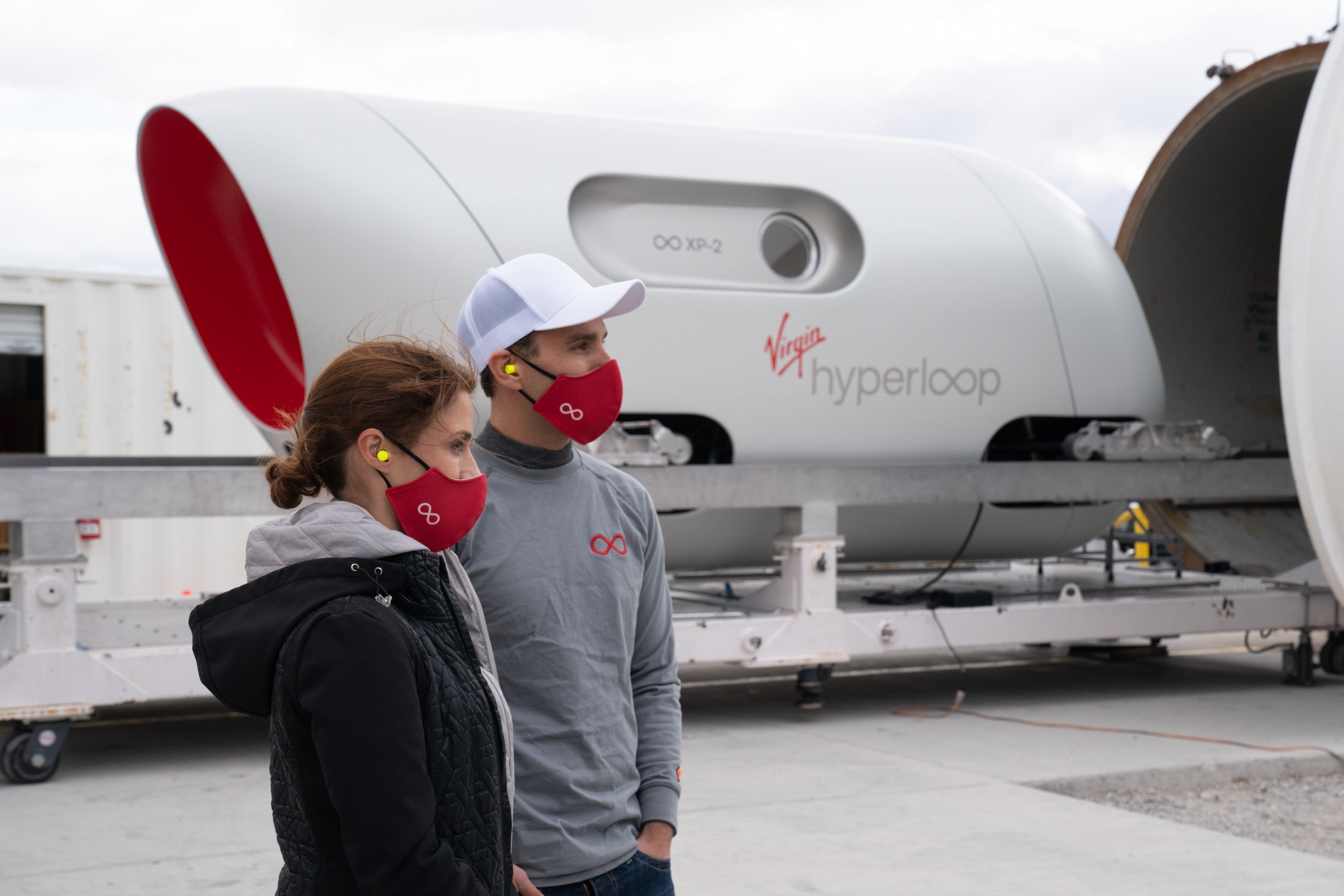Hyperloop: What is Elon Musk’s vision for vacuum tube train – and will it actually happen?
Virgin Hyperloop welcomed human passengers aboard a test pod, but it may be years before it opens to the public
Human passengers have travelled in a hyperloop pod for the first time, eight years after Elon Musk first envisioned the futuristic transport.
The maiden voyage took place on a 500 metre section of test track built by Virgin Hyperloop outside Las Vegas, Nevada, and lasted just 15 seconds.
Virgin Hyperloop is one of several companies hoping to realise Mr Musk’s vision for a transportation system that combines maglev technology with a vacuum environment to ping people through tubes at more than 1,000km/h.
A number of countries have also expressed interest in developing a hyperloop network, including France, India and Saudi Arabia.
If successfully rolled out on a significant scale, it will be the first new mode of mass transportation in over 100 years.
Following the latest test, Virgin Hyperloop appears to be the closest to realising this goal. But even their most optimistic timeline means that humans could be on Mars before a commercial hyperloop system opens to the public.
Virgin Hyperloop states that its goal is to be safety certified by 2025 and “begin commercial operations by 2030”.
The first crewed mission to Mars could take place as early as 2027, according to projections from Elon Musk’s firm SpaceX.

The potential of the technology is vast, but so are the number of obstacles that still lay in its path towards commercial deployment.
Former Virgin Hyperloop boss Rob Lloyd previously theorised that the 60km journey between Gatwick and Heathrow airports in London – which currently takes around 45 minutes by car and over an hour by public transport – could be completed in less than five minutes using a hyperloop.
But the amount of planning permission and other regulatory steps required for constructing such a network means it could be decades before it is realised, if at all.
Virgin Hyperloop has proposed a route between London and Edinburgh that passes through Birmingham and Manchester, with the entire journey taking less than an hour. The company, which was previously named Hyperloop One before Richard Branson invested in it, claims the UK route would be both quicker and cheaper than the high-speed HS2 rail network currently being developed.

Navigating local laws and landowners in the UK is considerably more problematic than some of the other countries where hyperloops are under consideration.
The stretch of desert between Abu Dhabi and Dubai in the United Arab Emirates is the place most likely to welcome the first commercial hyperloop, according to Richard Geddes, a professor of policy at Cornell University and co-founder of the Hyperloop Advanced Research Partnership.
“Not only does the country boast vast wealth and a relatively flat landscape, the nature of the government means big projects can be implemented quickly and efficiently,” Professor Geddes told The Independent in 2018.
“It’s not just hype. There’s too many smart people working on it and too much capital behind it for it to not be realised.”

Regardless of where and when we might see hyperloop networks in the future, Sunday’s test in the Nevada desert is a big milestone, particularly in terms of passenger safety. Neither passenger wore special clothing to travel in the pod or reported feeling sick, despite reaching speeds of 172kph (107mph) on the 15 second journey.
“When we started in a garage over six years ago, the goal was simple: to transform the way people move,” said Josh Giegel, co-founder of Virgin Hyperloop and one of the first two people to take part in the test ride.
“Today, we took one giant leap toward that ultimate dream, not only for me, but for all of us who are looking towards a moonshot right here on Earth.”
This article was originally published in 2020

Join our commenting forum
Join thought-provoking conversations, follow other Independent readers and see their replies
Comments